We opted for an area called Hi Jolly just a few miles north of Quartzsite where you can camp for free. There was actually a camp host who you registered with. He gave us a tag to put in our window that had the date we needed to leave by. There were lots of rigs close to the highway (something I never understand but Walter always says it’s so they don’t have to drive as far on the dirt roads) but there were lots of empty spots with no one around (and a nice view) further in. We opted for one of these spots with a view of the mountains and a bit of seclusion in amongst the mesquite trees.
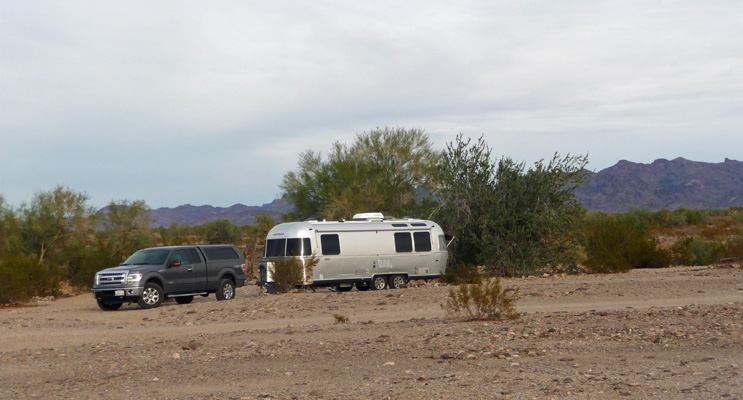
It was sunny so we put out the solar panels and the awnings and settled in. Since it hadn’t been much of a drive from Parker, and it was still really early in the day we made a lunch and drove south on Highway 95 through Quartzsite down to explore Palm Canyon at the Kofa National Wildlife Refuge.
To find the place, you just drive 20 miles south of Quartzsite (past a number of the big LTVA campgrounds) to the turn off that says “Palm Canyon”. You take the gravel road (mostly nicely graded) out past the entry into the Wildlife Refuge (with a camp host) and out until the road ends at a parking area. The drive out was really pretty.

In real life the creosote bushes don’t look that orange but no matter what I do, when I take photos of them, they’re rust colored. The road actually is that red color though.
We’re headed straight ahead for the big deep canyon in this lovely mountain.
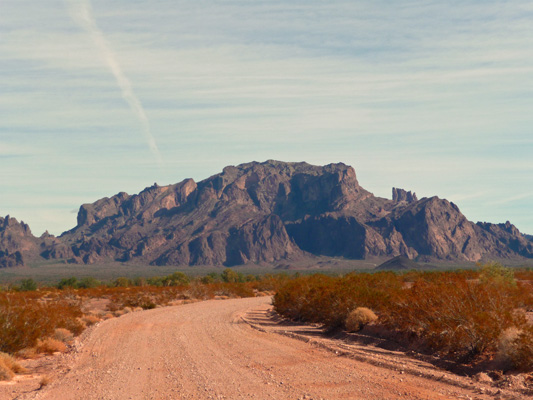
The KOFA National Wildlife Refuge was founded in the 1930s to protect the desert big horn sheep who are indigenous to this area. By the 1930’s their numbers had been greatly reduced and someone at least had the forethought to set aside this huge refuge to support them. We saw no sheep while we were out here but ah well.
The trail head is well marked with a few information signs about the surrounding desert and the big horn sheep. The rocky trail wanders up the canyon between steep cliffs on each side.
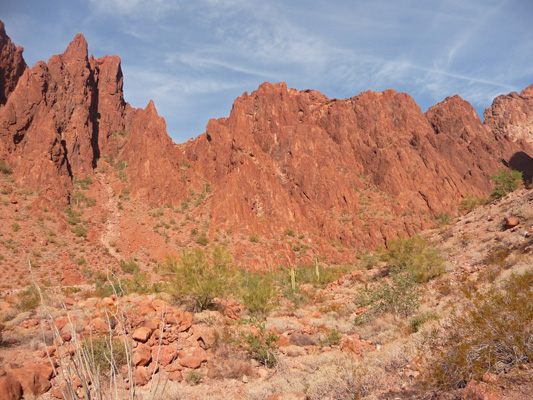
It’s mostly creosote bush and iron wood but there were a few saguaros mixed in too.
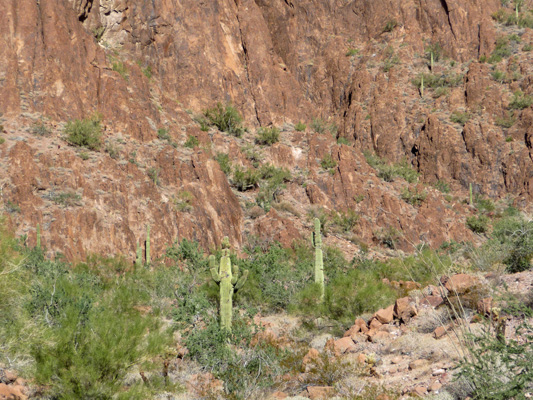
In about 3/4 of a mile you come to a sign that says “Palms” with an arrow that points up to the left. We were expecting to see the trees nestled in at the back of the canyon in the usual oasis position. Not here. Instead, they are up in a shaded cleft in the side of the canyon wall.
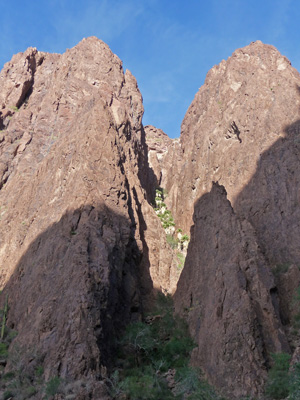
These trees are some of only a few scattered along the Kofa range representing the only indigenous palms in all of Arizona.
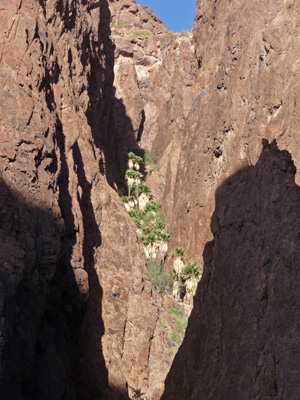
There are two theories about why these trees are here. One says they are remnants of the last ice age, protected by the ‘cool’ shade here (cool being relative since it gets to be 120 on the valley floor in the summer). The other theory says that birds have brought seeds from places like Anza Borrego in California and they’ve found a safe harbor here in the mountain cleft.
In any case, they presented a nice excuse to go hiking on a lovely sunny day. The canyon itself is quite amazing and even on a Sunday afternoon there were only 4 other cars in the parking lot—one belonging to someone tent camping at the little primitive campground out there.
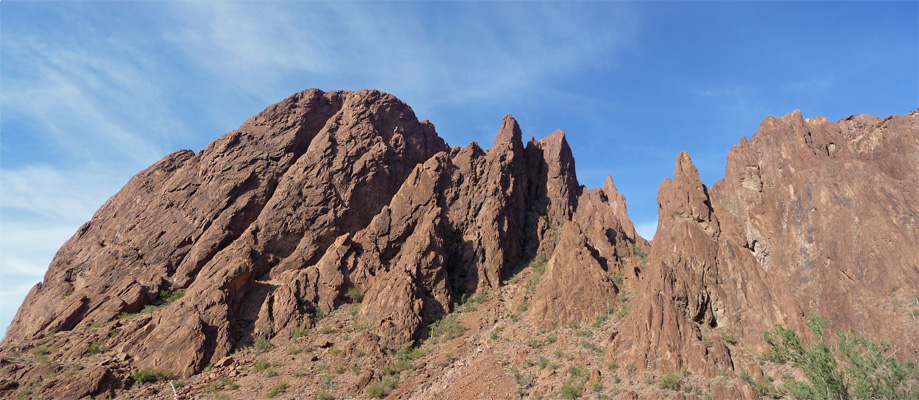
After our hike, we ate our lunch in the parking lot overlooking the valley below. There’s a forest of Teddy Bear Cholla here that stretches out for miles—mind you they’re only about a foot tall, but there are thousands of them so it must be a forest, no?
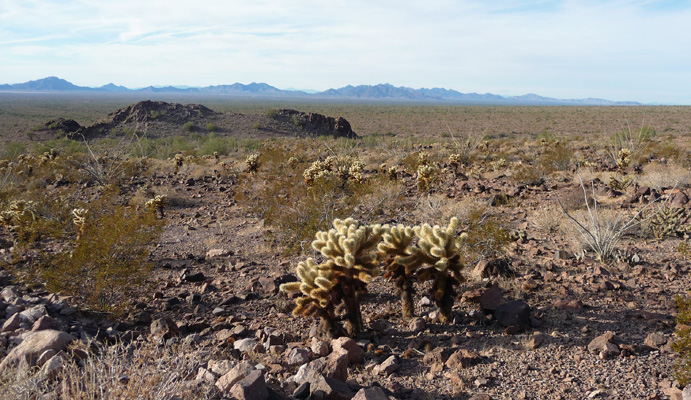
That night we had a few clouds come in that gave Mother Nature a canvas for a subtle sunset.
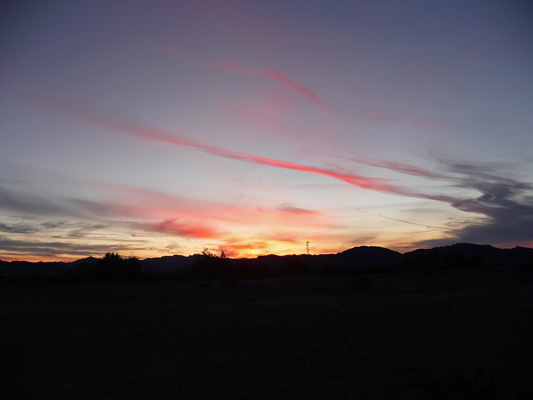
On Monday Dec 15th, we drove towards Blythe CA just cross the border from Quartzsite AZ to visit the Cibola National Wildlife Refuge. The refuge is in Arizona but the easiest way to get there is to drive to Blythe and go south until you cross the Colorado River back into Arizona.
There’s a loop drive through the northern part of the refuge that we decided to take. The first stop is the loafing pond—a place where birds go to hang out after their active feeding period in the morning. And boy were they loafing!
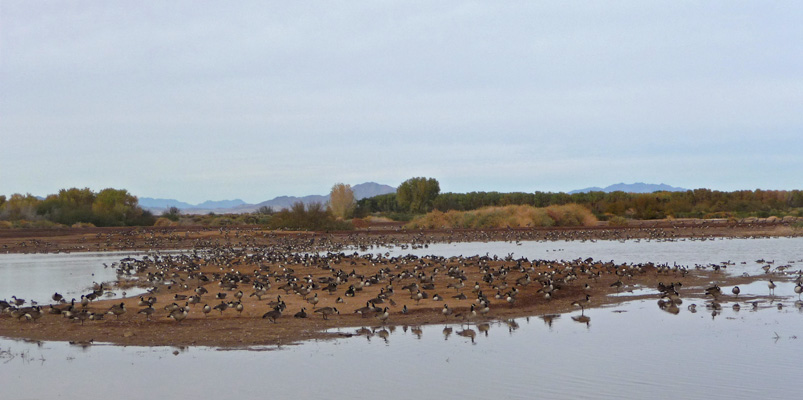
There were hundreds of Canada Geese here—more than I’ve ever seen anywhere. And they were honking happily away.
Mixed in with them were Northern Pintails, some pretty snazzy looking ducks with very pointy tails.
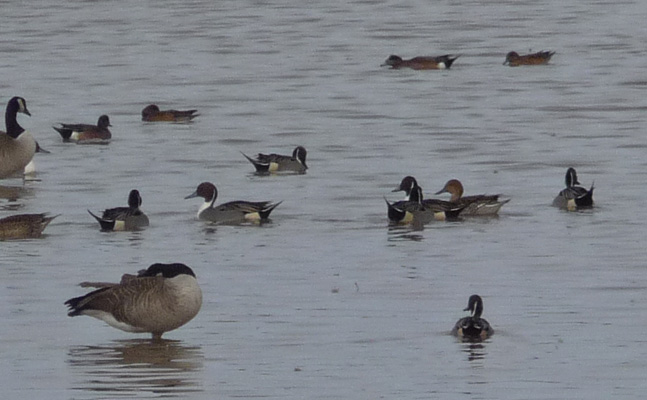
We drove on to the trail head for a 1-mile nature loop trail out into an riparian restoration project with indigenous cottonwoods (Fremont Cottonwood), willows (Gooding’s and Coyote Willows) and Mesquite (Honey and Screwbean Mesquite).
We took a side trail out along an irrigation ditch to look out into the refuge and saw a whole long trail of bobcat tracks.
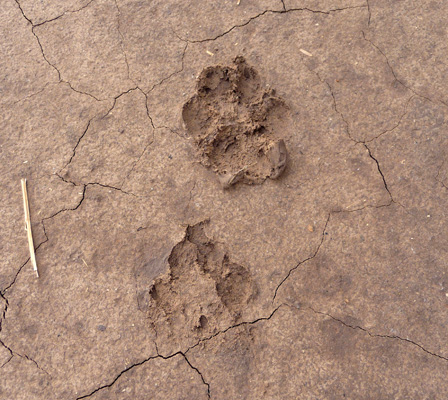
The Fremont Cottonwoods with their gorgeous white bark line the trail for a while.
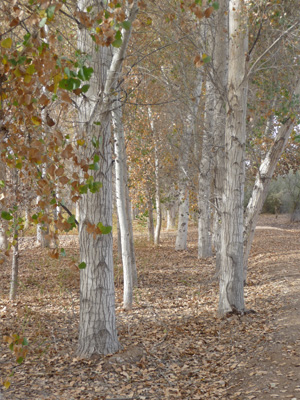
And this big guy was standing alone.
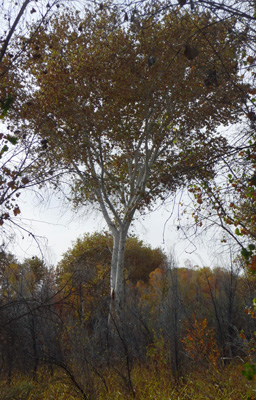
There’s a small side trail that leads out to a platform where you can watch the birds in another big pond. Here we saw mostly mallards with more Canada Geese off on the far side.

After the hike we continued on the loop road past a series of fields planted in corn and alfalfa. Out in the alfalfa fields we began to see groups of Sandhill Cranes.
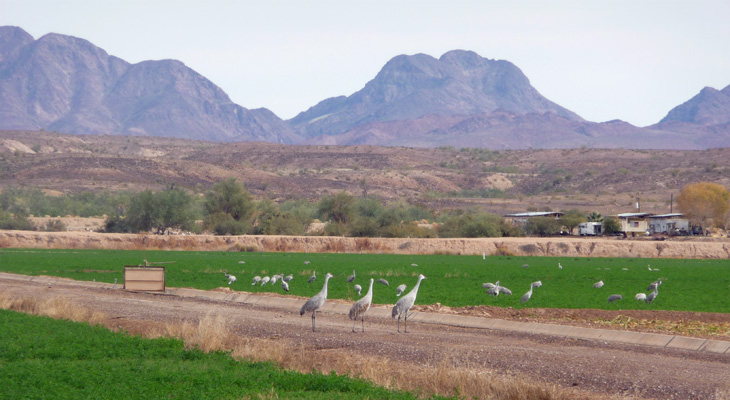
As we drove along the groups got larger and larger.
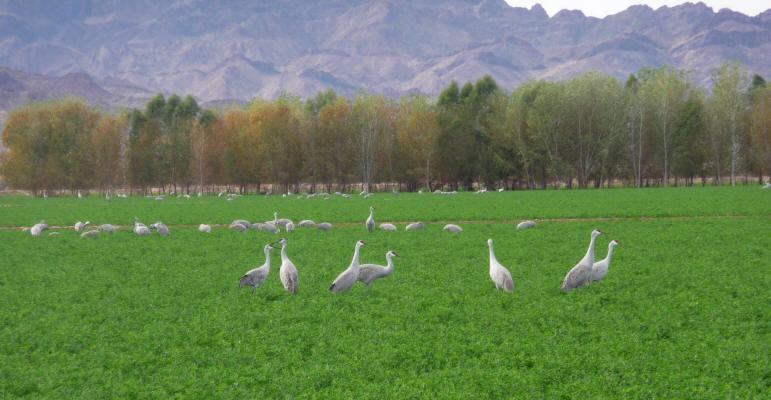
Until we could see huge flocks of them.
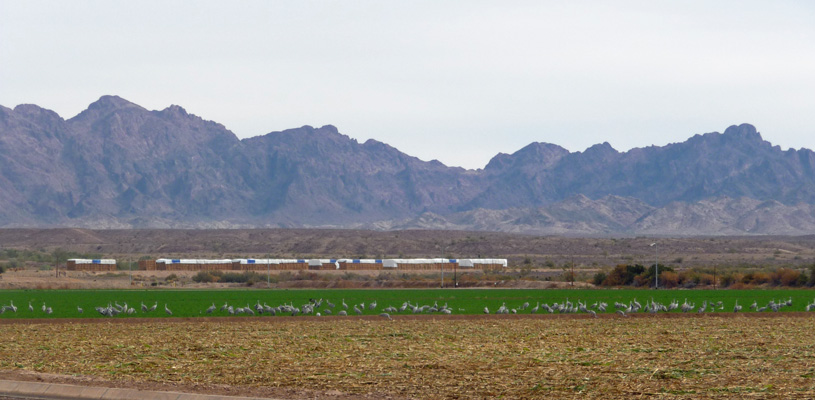
I’d never seen them in the flesh before so it was doubly exciting to have so many of them. They have a call that’s like a squeaky hinge that needs oiling. Mostly they were way out in the fields so I had to use my zoom lens to get much of a close up. But I did manage to get a semi-decent shot of their red eyebrows.
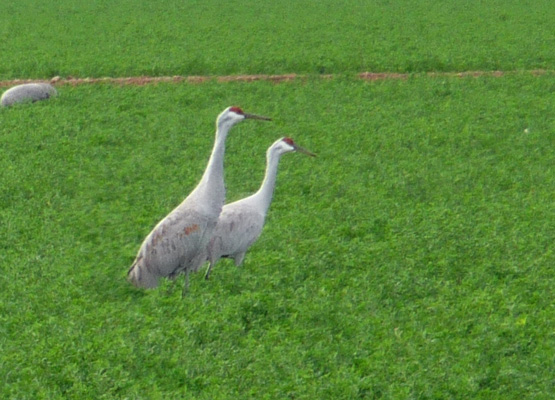
While we were driving along 2 HUGE flocks of blackbirds took flight and put on a wonderful swooping folding aeronautical display. When we drove by where they had landed, I realized these were no regular blackbirds. They had yellow breasts.
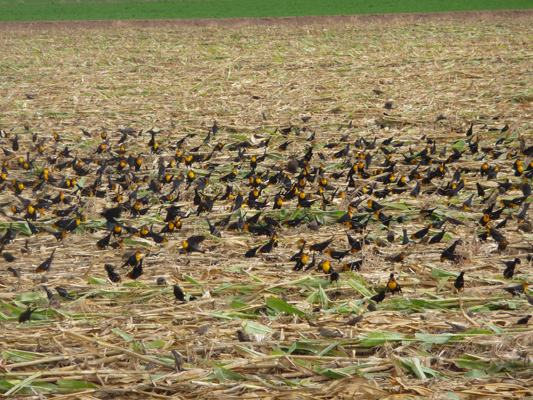
We learned later that they’re called Yellow-headed Blackbirds. There are regular old red-winged blackbirds mixed in with them too.
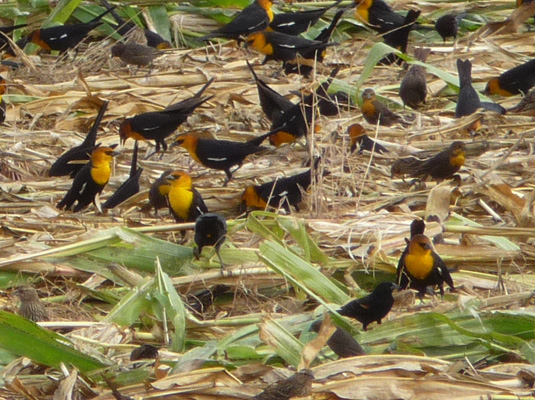
The refuge plants the corn and and then just cuts it down and lets the birds feast on it. No wonder there are so many huge flocks of birds here.
We continued through the loop and on the final stretch saw some more Sandhill Cranes posing.
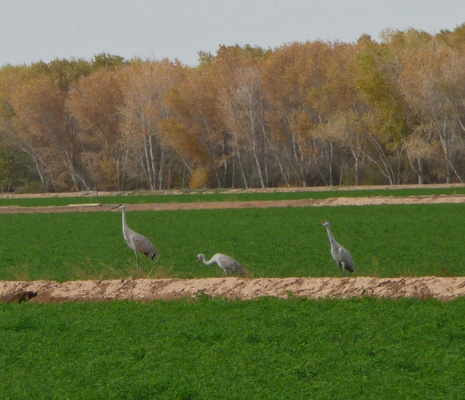
We stopped at the small visitor’s center and talked with the volunteers who man the center for the winter. They’re like camp hosts in that they get their parking spot free in exchange for manning the center. I’d read that there were supposed to be snow geese here and asked where they were. They swore they were out there. It turns out that they change locations across the day. You can see them first thing in the morning out where we saw the ducks but they loaf further south in the refuge during the day.
We took one of the roads down into the heart of the refuge and saw a few snow geese here and there in ponds that would appear and then disappear into the reeds.
The area just to the north of the refuge is all agricultural land where they grow alfalfa and cotton. On the Arizona side the cotton bales lined the road ready for picking up.
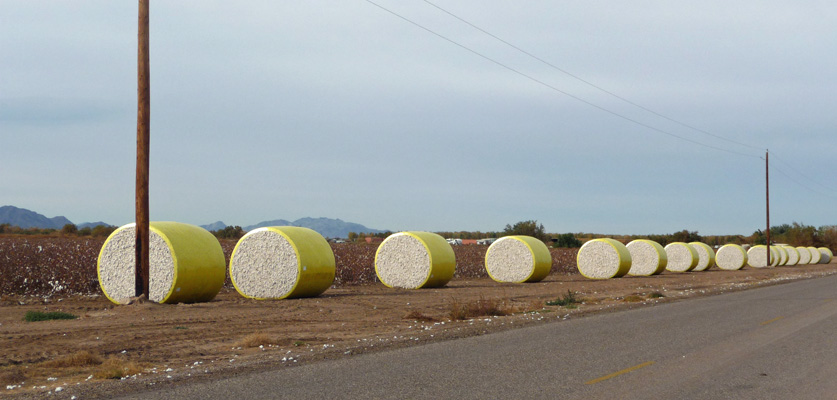
They’re wrapped up in yellow shrink wrap.
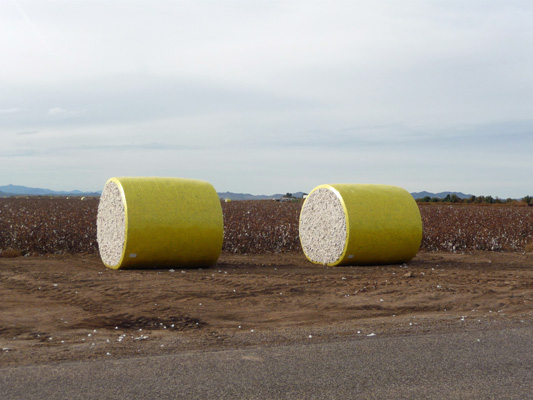
On the California side, they make rectangular bales with tarps on top of them. Neither of us could figure out how in the world they were going to pick them up to put them on a truck without them falling apart.
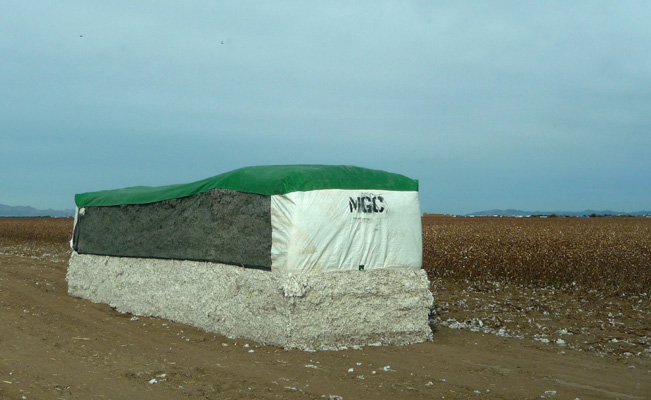
On Tuesday Dec. 16th, we packed up the trailer and motored south along Hwy 95 to the Yuma Proving Grounds and then along a gravel road through the Proving Grounds themselves to the Mittry National Wildlife Refuge. This is yet another place to boondock. The spot we’d read about was already full of RV’s but we found a nice spot overlooking a pond and the lake in a bit of a turn out next to the road.

That first day, it was a little dusty because we had a whole batch of four wheelers and strange dune buggy-type vehicles roar by on the road. But that evening it rained and that took care of the dust. In the afternoon, we took a drive along the road to see what we could see. There are a couple of Day Use areas and a boat launch along the lake shore. In addition there are some camping spots in amongst the reeds with peak-a-boo water views. There were LOTS of folks out camping here.
The next morning after the rain, there was a bit of a sun break so we went out for a short hike to explore the area nearby. You can see Genevieve and François over past the pond.
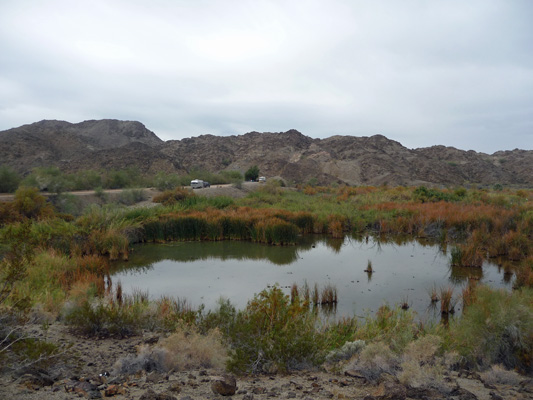
We followed the trails around and ended up on the top of a little hill overlooking the lake. Walter sat and watched the birds while I took pictures.
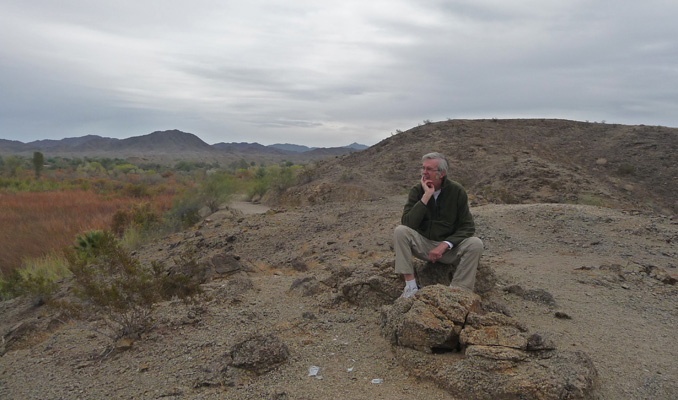
The day before I’d spent some time trying to get photos (with little success) of a pair of snowy egrets that were hanging out in the pond. But in between the showers that afternoon, I managed to get a couple of nice shots of them.
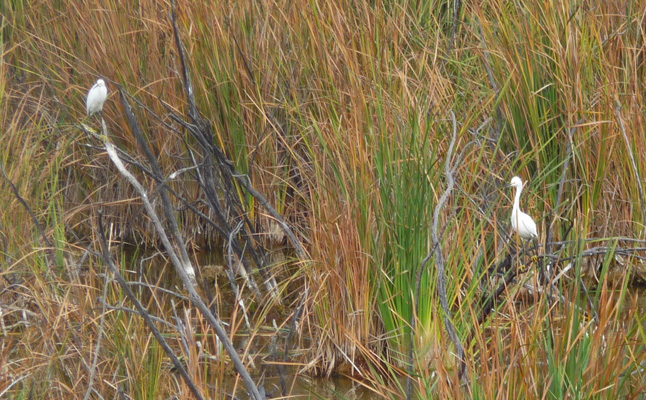
I love the fluffy feathers on the back of his head!
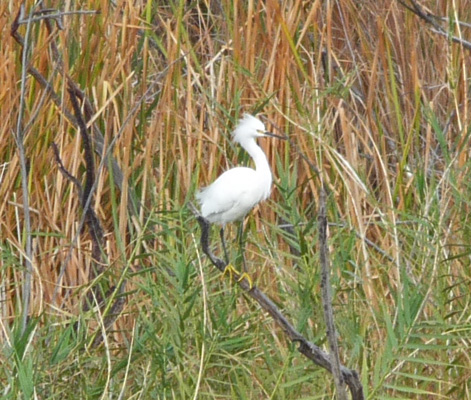
Periodically the male would harass the female and they’d both take off.
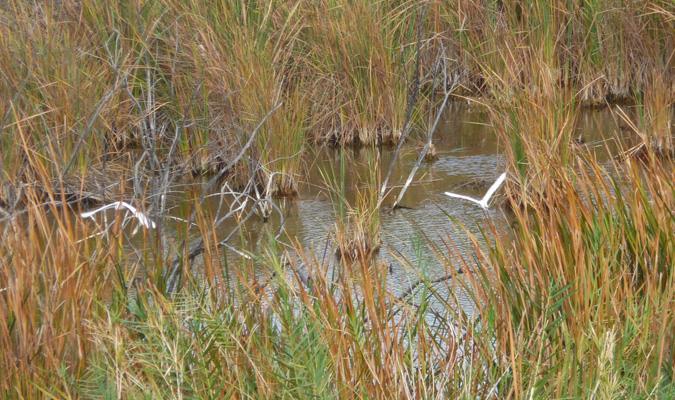
Most of the clouds cleared off in the afternoon and I got this nice reflection shot of one of them.
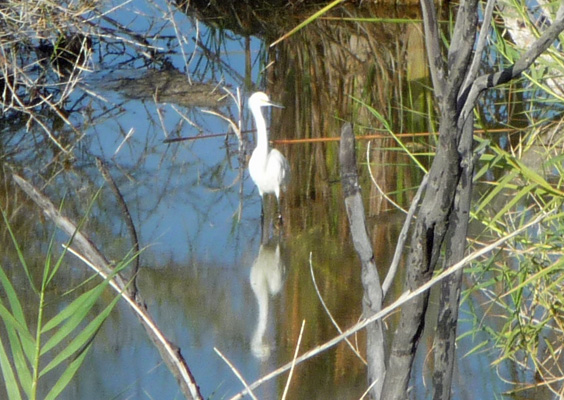
And because everything looked so different in the sunshine I took another panorama shot of the lake for you.

Later in the afternoon we took a walk down to the boat launch area (there are dumpsters down there for trash which is a bonus). And I took this shot of the lake looking southeast.
There weren’t many ducks on the lake but like Lake Havasu, there were LOTS of coots (mud hens) here.

On Thursday Dec 18th we motored a mile or so out of the west side of the refuge straight onto pavement rather than taking the 6 miles of gravel road back the way we had come in. We drove through the agricultural land north of Yuma where they grow lettuce and broccoli this time of year. There were pickers out as we drove by mid-day. We drove into Yuma and then south of town to the KOFA KO-OP, an Escapee Resort where you have to be a member of the Escapee Club to stay. We bought an Escapee membership this fall, to check it out and this was our first stay at an Escapee park. They have a discount program similar to Passport America (better than Good Sam but not as good as Passport in terms of discounts) which we’ve used a couple of times and then you can stay at their parks too.
We got a full hook up site across from the club house for $20 a night plus electricity. They have a nice laundry room with 6 washers and dryers which was one of the things we were here for. On Thursday afternoon we set off back through the lemon orchards (which smelled heavenly) to go pick up our mail at General Delivery at the Yuma main post office and then do grocery shopping. There was a long line at the Post Office—surprise surprise it was only a week until Christmas and everyone had a package to mail.
On Friday, we went did errands and then I did the laundry in the afternoon. While doing the laundry I met a lady who had spent the last several summers being a camp host in the Colorado State Parks. It sounds like their responsibilities were very much the same as ours will be in both Idaho and Oregon—do reservation signs, sell firewood and make sure everyone is registered.
On Saturday, we made a trip to the Peanut Patch, the local farm stand where they sell peanuts, dates, dried fruit and fudge of all kinds. Then on to Walmart to pick up a few miscellaneous things including a replacement for a cereal bowl that got broken. We bought a pair of Corel bowls for the Casita back in 2002 at Walmart and believe it or not, we got a replacement bowl that is EXACTLY the same. Who says that nothing stays the same? We have a couple of soup bowls that Walter had when I met him in 1978 and they still make ones exactly like those too!
Walter watched a bowl game on TV and I puttered around. Then late in the afternoon we took a walk around all the roads in the park and stopped and talked to one of the ‘lease holders’—folks who have long term leases on the lots where they park here (mostly for the whole winter). You can wait 5 or 6 years to come up on the list to get one of these lots! The lease costs about $12,000 and then a yearly fee of about $1000. When they’re not in their spots, the KO-OP rents out their spaces to folks like us.
When we got back from our walk, I put on my bathing suit and walked over to the pool area. They keep the pool at 85 degrees but by that point the clouds had come in and swimming didn’t look all that attractive. So I just sat in the hot tub for a while instead—lovely. It sure doesn’t feel like it’s a few days before Christmas to me.
